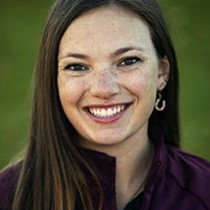M.S. Thesis Defense - Tanessa Morris
Effect of Biomass Water Dynamics in Cosmic-Ray Neutron Sensor Observations: A Long-Term Analysis Of Maize-Soybean Rotation in Nebraska
1:00 pm –
2:00 pm
Hardin Hall
Room: 901 South
3310 Holdrege St
Lincoln NE 68583
Lincoln NE 68583
Additional Info: HARH
Virtual Location:
Zoom Webinar
Target Audiences:
Contact:
Trenton Franz, tfranz2@unl.edu
Precisely measuring soil water content (SWC) is crucial for effective water resource management. This study utilizes the Cosmic Ray Neutron Sensor (CRNS) as a novel technique for area-averaged SWC measurements at an intermediate scale. However, accurate SWC measurements from CRNS require consideration of all hydrogen sources, including time-variable ones like plant biomass and plant water. Near Mead, Nebraska, three field sites (CSP1, CSP2, and CSP3) growing a maize-soybean rotation have been monitored for 5 (CSP1 and CSP2) and 13 years (CSP3). Data collection includes biomass water equivalent (BWE) biweekly with destructive sampling, epithermal neutron counts, atmospheric meteorological variables, and point-scale SWC from a sparse Time Domain Reflectometry (TDR) network (4 locations and five depths). In 2023, dense gravimetric SWC surveys were collected eight times in fields CSP1 and CSP2 and nine times in CSP3 over the growing season (April to October). The N0 parameter, presented in Desilets et al. (2010) as the transformation function between epithermal neutron counts and SWC, exhibits a strong linear relationship with BWE, suggesting a straightforward vegetation correction factor may be suitable (fb). Results from both the 2023 gravimetric surveys and long-term TDR data indicate a neutron count rate reduction of about 1% (0.6% minimum and 1.7% maximum) for every 1 kg/m2 (or mm of water) increase in BWE for all three sites and two crop types. This reduction factor aligns well with existing shorter-term row-crop studies but nearly doubles the value previously reported for forests. The higher count rate detector model #CRS-2000/B model at CSP1 and CSP2 significantly reduced the uncertainty in the BWE-N0 results (r2 of 0.8 vs. 0.3) compared to the #CRS-1000/B model at CSP3. This research strongly supports the idea that an fb correction should be applied for cropland sites. It is also possible the same fb correction can be applied to forest sites, but a long-term study is still needed to validate both the linear function and magnitude of the coefficient. This long-term study contributes valuable insights into the vegetation correction factor for CRNS, helping resolve a long-standing issue within the CRNS community.
